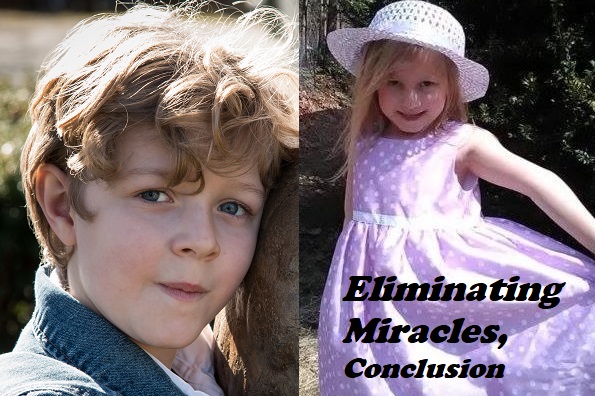
I realize that not everyone’s story ends as mine did. Some children are born with challenges that my daughter does not have, like my son, who has cerebral palsy. When I look at him, though, I don’t see a condition. I see a strong little boy who has overcome obstacles.
One of the special things about having him in our lives is getting to witness miracles. When he was born, we did not know what his long-term prognosis would be. There were a lot of things that could have gone wrong. As it turns out, he has been seizure-free since he was six months old and the only muscle weakness that he has is from the ankle down on one of his legs. His physical therapist told me that he is the only child with cerebral palsy that she has worked with whose hand on the affected side of the body was not impacted along with his leg. After what we’ve experienced with him, it seems a little silly that I was afraid to have a child with a different sort of challenge. What can I say; I am still a work in progress.
Our daughter is a miracle as well. None of the doctors ever could explain to us why my bloodwork came out the way it did, why my placenta was so unhealthy, why my amnion and chorion fused so late in the pregnancy. The fact that I had the chorion amnion separation at all is a bit of a mystery, as it doesn’t usually occur spontaneously, but after an invasive procedure, such as an amnio. A pregnancy is considered at high risk for Down syndrome if the chances are calculated to be 1 in 200. My results were 1 in 12. Yet, after all of that, she is completely healthy.
I would never discount the feelings of a parent who has watched their child suffer. What my own experience has taught me, though, is that there are things that we cannot control, and that is OK. When I was pregnant with my son, my co-workers teased me about how careful I was about what I put in my body or allowed myself to be exposed to. In the end, none of it mattered. The doctor didn’t realize that the cord was wrapped around his neck until it was too late. That’s not the end of his story, though. God has a purpose for his life. He is here for a reason.
Prenatal testing is not perfect. I am not the first person to be told that my child would likely have a condition that she did not end up having. I can’t imagine how it must feel to hear one of those stories, if you have aborted your child on the advice of your doctor after a prenatal diagnosis. I often think of my former co-worker who was pushed into an abortion. She wanted to wait and hope. She should have been allowed to do that.
If you give up hope because your doctor thinks there is something wrong with your unborn baby, you might miss hearing the doctor say, “I don’t know what happened, but we were wrong.” You might miss the moment when a doctor or therapist says, “I didn’t think your child would ever be able to do that.” Or, you might miss the opportunity to enjoy a radiant smile like I saw on the children at the train station.
You will not have eliminated a potential problem. You may have just eliminated the chance to experience a miracle firsthand.


